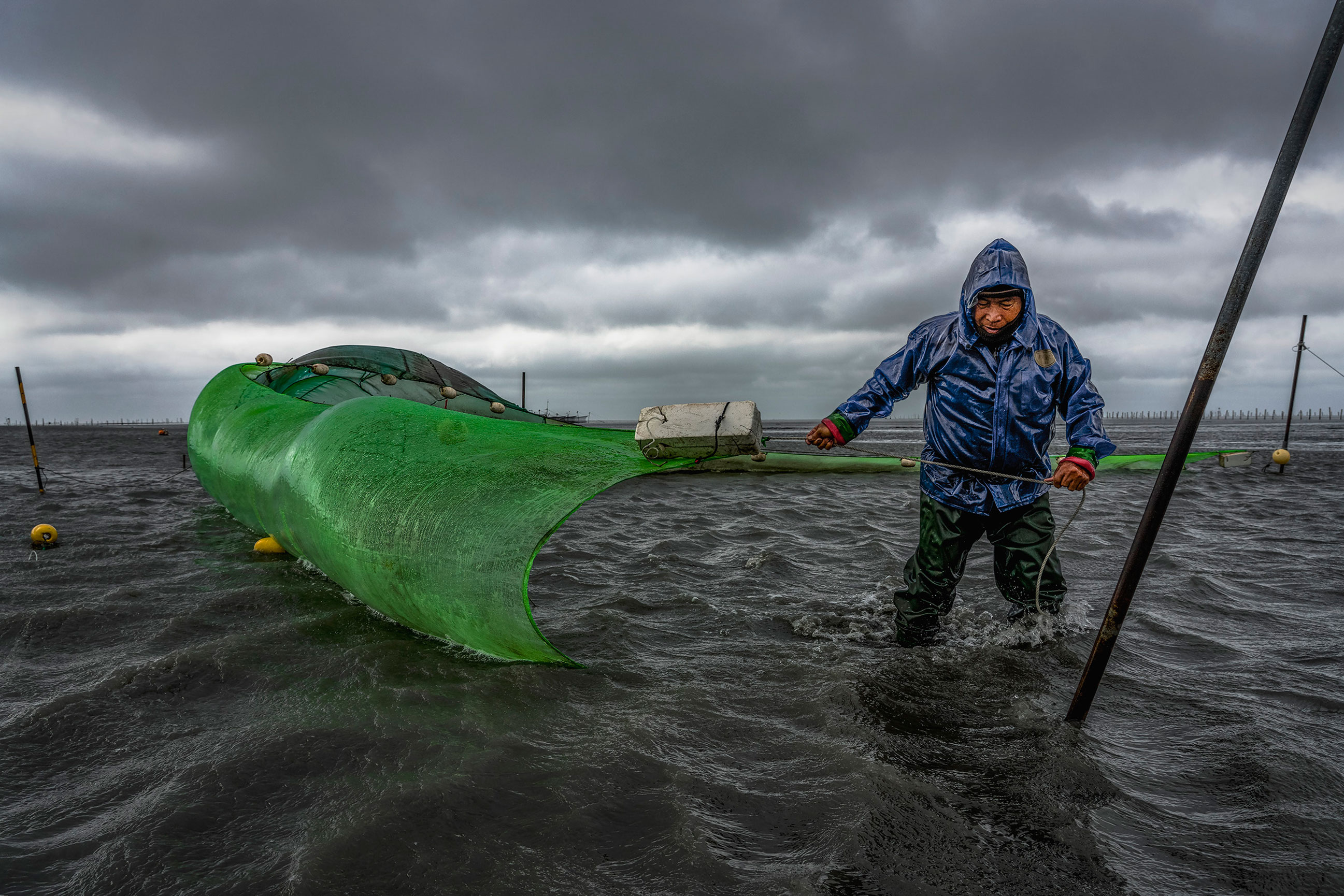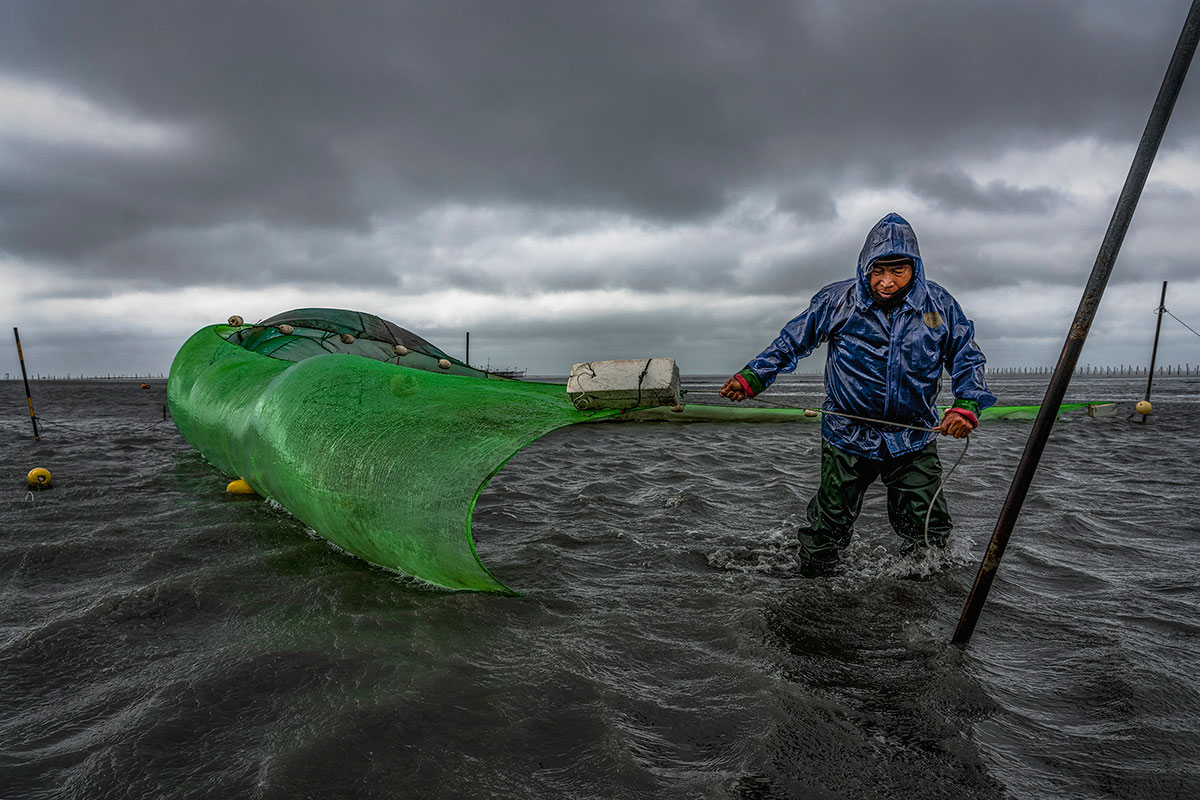HSU Cheng-Tang

The Fisherman
- 2022, giclée print, 50 × 75 cm.
- Courtesy of the artist.
Curatorial Perspective
Every year, for more than 60 years, fishermen living near the Jhuoshuei River estuary have started fishing for glass eels after the Mid-Autumn Festival. This is their tradition and part of this area’s marine culture, serving to pass on methods of surviving at the estuary and as a witness to the changes in the environment. One fisherman says, “I have fished for glass eels my entire life. I really don't know how it is that glass eels come here. All I know is that they are capable of surviving in both the ocean and on freshwater mudflats.” The time when glass eels arrive at the area is the season of utmost importance to the fishermen. Based in Taixi, Changhua, and known for his work – The Fisherman and Glass Eels, humorous and knowledgeable photographer Hsu Cheng-Tang mentions that Western philosopher Aristotle believed that eels originated from mud, and that psychologist Sigmund Freud once studied eels but was unsuccessful in figuring out the secrets of the sex of eels and how they reproduced. As of today, scientists and the eel farming industry are still unable to crack the reproductive mystery of the species, and consequently lack the means to artificially reproduce eels at large quantities. In Taiwan, the period from the solar term of “Li Dong” (winter begins) to after the Lunar New Year marks the peak season of catching glass eels at the Jhuoshuei River estuary. After Hsu retired from being a high-level corporate executive, he has picked up his artistic passion for photography again, and has interviewed numerous eel fishermen at the estuary. Like a predecessor in the same walk of life, he documents the views of the fishermen casting nets and making use of the rising tides amidst the ebbs and flows, and the ecological viewpoint of species diversity visualized in his work resonates with the theme of the exhibition.
Creation Description
Every year, for more than 60 years, fishermen living near the Jhuoshuei River estuary have started fishing for glass eels after the Mid-Autumn Festival. This is their tradition and part of this area’s marine culture, serving to pass on estuary survival methods and as a witness to the changes in the environment.
One fisherman says, “I have fished for glass eels my entire life. I really don't know how it is that glass eels come here. All I know is that they are capable of surviving in both the ocean and on freshwater mudflats.” Eel migration and spawning are quite interesting, but not readily acknowledged by fishermen. However, they know exactly when the glass eels will arrive, just like the legend of the Cowherd and the Weaver Girl (meaning that they are in sync).
Aristotle believed that eels came from mud. This is the “explicit” answer he gave based on his empirical research. It is true that the Jhuoshuei River nourishes most of Taiwan and possesses its most distinctive mud. How can we understand the unique marine life and environment of the Jhuoshuei River estuary? No matter the fishermen who live there or the life cycle of the eels, they are reflected in the contemporary estuary ecology and environment.
Before Sigmund Freud became known as the founder of modern psychoanalysis, he spent a summer dissecting eels and researching their reproduction. After failing, he turned to the study of human psychology and made great achievements. For this, we are grateful to the eels. In the same way, the fishermen who depend on glass eels to get through the winter, and wrestle in the mud along the Jhuoshuei River to catch them, are also grateful.
Such chance meetings are not limited to glass eels. They also happen with volcanic pumice and marine debris, which travel thousands of miles across the ocean to the Jhuoshuei River. This is its connection to the marine environment. Even though the Jhuoshuei River has a limited impact on the ocean, we cannot ignore its position or implication. It is also the flow path by which glass eels reach Taiwan.
In comparison with the vast ocean, the turbid Jhuoshuei River seems insignificant. At a time when glass eel populations are in decline, marine debris is endless, streams are running dry, and the environment and ecology are changing. Can we peek into the relationship between contemporary social development and the environment? After so many visits, I have found that all this is like the mysterious life cycle of the eel.

